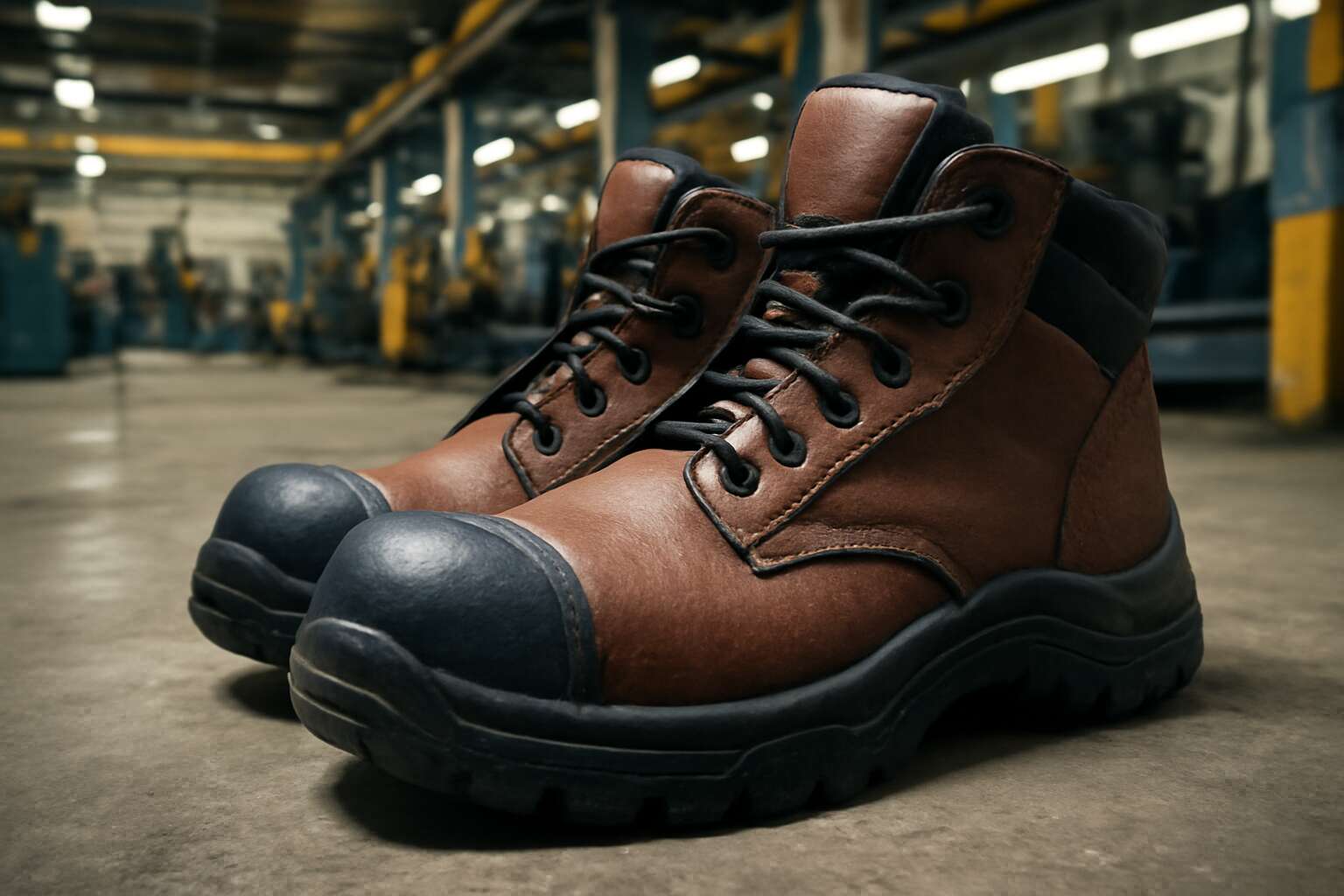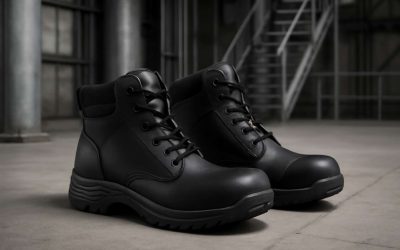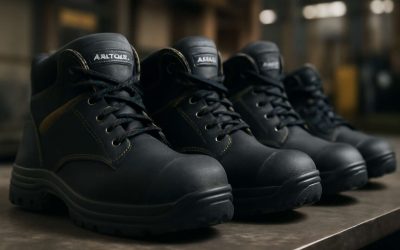Understanding Safety Boots Durability
Types of Safety Boots and Their Lifespan – Different types of safety boots and factors affecting their longevity
Understanding the durability of safety boots is crucial when considering how long should safety boots last in demanding environments. Not all safety boots are created equal; their lifespan hinges on the materials used and the conditions they face daily. For instance, leather safety boots tend to age gracefully if maintained properly, often lasting between 6 to 12 months of consistent use. In contrast, composite-toe safety boots, known for their lightweight comfort, might need replacement sooner due to wear and tear. The key lies in recognizing that each type of safety boot has an intrinsic lifespan, influenced by factors like exposure to chemicals, moisture, and physical impact.
Factors affecting longevity include the frequency of use, the intensity of work tasks, and maintenance routines. Regular checks for sole deterioration, stitching integrity, and material degradation can reveal when it’s time to replace your footwear. While some safety boots might serve well beyond their typical lifespan, others might falter prematurely if subjected to harsh conditions. Ultimately, understanding how long should safety boots last requires a careful assessment of these variables, ensuring optimal protection and performance in the workplace.
Material Composition and Its Impact on Durability – How materials like leather, synthetic, and rubber influence lifespan
When it comes to safety boots, the question of how long should safety boots last is as vital as knowing when your coffee is just right. The secret lies in the materials used. Leather safety boots, for instance, are like the fine wine of workwear—age gracefully if cared for properly, often lasting between 6 to 12 months of steady service. Their durability hinges on their thick, natural hide, which, with proper maintenance, resists the rigors of demanding environments.
On the flip side, synthetic safety boots—constructed from various plastics and fibers—tend to be lighter and more comfortable but may not stand the test of time as well as leather. Rubber safety boots, renowned for their waterproof qualities, excel in muddy, wet conditions but can degrade faster under constant exposure to chemicals or extreme heat. To give your footwear the best shot at lasting longer, consider these factors:
- Exposure to harsh chemicals
- Frequency of use
- Work environment conditions
- Regular maintenance routines
Understanding the material composition of your safety boots can transform the way you approach their longevity, ensuring maximum protection with every step—because in the end, it’s all about knowing how long should safety boots last in your specific job scenario.
Factors Influencing the Longevity of Safety Boots
Frequency of Use and Workplace Conditions – How usage amount and environment affect wear and tear
In the shadowed corridors of industry, the true measure of safety boots’ longevity remains an elusive enigma. The relentless march of time and toil carve scars deep into their fabric, whispering secrets of their resilience. When pondering how long should safety boots last, one must consider not just the passage of weeks but the relentless erosion wrought by their environment. Heavy machinery, corrosive chemicals, and abrasive surfaces conspire to accelerate wear, transforming sturdy defenses into fragile relics.
Workplace conditions wield a sinister influence over their lifespan. For instance, exposure to moisture and extreme temperatures can weaken materials, diminishing their protective prowess. The frequency of use acts as an unforgiving clock—boots worn daily under harsh conditions will inevitably succumb sooner than those reserved for light-duty tasks. To truly grasp how long should safety boots last, one must acknowledge these invisible battles fought on every shift. Recognize that relentless use and unforgiving environments are the twin harbingers of premature demise—turning sturdy footwear into forsaken artifacts of safety.
Maintenance and Care Practices – Proper cleaning, drying, and storage to prolong life
Proper maintenance and care practices are crucial in determining how long should safety boots last. Without regular attention, even the sturdiest footwear can deteriorate rapidly. Cleaning your safety boots after each shift removes dirt and debris that can cause material breakdown over time. Using the right cleaning agents ensures the integrity of the materials remains intact. Drying them thoroughly—away from direct heat—prevents cracking and warping, especially for leather options which are sensitive to moisture.
Storage also plays a pivotal role. Keeping safety boots in a cool, dry place helps maintain their shape and prevents mold or rot. Avoid leaving them in damp or exposed environments where harsh elements accelerate wear. An often overlooked step is inspecting your boots regularly for signs of damage, such as worn soles or loose stitching. Recognizing early issues can extend their lifespan significantly, helping you get the most out of your investment. Ultimately, a disciplined approach to care influences how long should safety boots last, ensuring they remain reliable on every shift.
Quality of Construction and Brand Reputation – The role of manufacturing quality and trusted brands
The durability of safety boots hinges significantly on their construction quality and the reputation of the brand behind them. A well-made pair, crafted with precision and robust materials, can often outlast cheaper, poorly manufactured alternatives. When considering how long should safety boots last, the answer is deeply intertwined with these factors. Trusted brands invest in advanced manufacturing techniques, ensuring each seam, sole, and reinforcement is designed for resilience.
In fact, choosing a reputable brand can mean the difference between safety boots lasting a few months versus several years. High-quality safety boots often feature reinforced toe caps, durable soles, and weather-resistant uppers—elements that stand up to demanding environments. Keep in mind that a poorly manufactured pair, regardless of their initial appearance or price, may wear out prematurely, forcing workers to replace them more frequently. Therefore, when asking how long should safety boots last, always factor in the craftsmanship and brand reputation as key determinants of longevity.
Signs That Safety Boots Need Replacement
Visible Wear and Damage – Cracks, holes, worn-out soles, and other visible issues
Safety boots are more than just protective gear—they’re a guardian for your feet, especially in demanding environments. Yet, even the sturdiest pair can’t stand the test of time forever. Recognizing the signs that your safety boots need replacement is crucial to maintaining optimal safety and comfort.
One of the clearest indicators that how long should safety boots last has come to an end is visible wear and damage. Cracks, holes, and worn-out soles tell a story of fatigue and exposure to harsh conditions. These imperfections not only compromise the structural integrity but also diminish the protective qualities that keep workers safe. When soles become thin or uneven, they can lead to slips or trips, turning safety into a liability.
Inspect your boots regularly—look for signs such as:
- Cracks or tears in the leather or synthetic material
- Holes forming on the upper or sole
- Significant worn-down tread that no longer provides grip
- Separation of sole from the upper
These visible issues, coupled with signs of discomfort or decreased support, signal that your safety boots have likely reached the end of their lifespan. In the world of occupational safety, no detail is too small, especially when it involves how long should safety boots last and ensuring your feet stay protected every step of the way.
Reduced Protective Performance – Loss of grip, compromised safety features
When safety boots lose their grip, it’s more than just an inconvenience—it becomes a perilous gamble with each step. The question of how long should safety boots last isn’t merely academic; it’s a critical concern for anyone committed to workplace safety. Over time, the protective features designed to shield your feet diminish, often unnoticed until a slip or injury occurs. The deterioration of sole tread, for instance, erodes the very foundation of safety, making every surface a potential hazard.
Reduced grip isn’t the only warning sign. Compromised safety features, such as weakened toe caps or failing waterproofing, can silently undermine your protection. When the boots no longer provide reliable support or the materials show signs of fatigue, it’s time to reconsider their lifespan. A simple inspection can reveal if the structural integrity is failing. Remember, in environments where safety is paramount, knowing how long should safety boots last can make all the difference between security and danger.
Discomfort and Fit Issues – Persistent discomfort indicating internal damage
Ever tried squeezing into shoes that no longer fit? Now imagine doing that with safety boots that have lost their protective edge. Discomfort isn’t just a nuisance—it’s a sneaky warning sign that your boots might be past their prime. Persistent pinching, rubbing, or aching can indicate internal damage or compromised support, which could jeopardize your safety on site. If your safety boots feel more like torture devices than protective gear, it’s time to take a closer look.
Signs such as aching soles, loose fit, or weird pressure points mean your footwear’s internal structure might be deteriorating. And let’s face it, ignoring these cues isn’t just uncomfortable—it’s dangerous. When safety boots no longer offer a snug fit or feel oddly unstable, you’re walking a fine line between comfort and catastrophe. Remember, knowing how long should safety boots last is crucial for maintaining optimal workplace safety. After all, a good pair of boots should feel like an extension of your feet—not a medieval torture device.
Recommended Replacement Intervals for Safety Boots
Based on Material and Usage – General timelines per material type and usage frequency
Understanding how long should safety boots last is crucial for maintaining optimal protection in demanding workplaces. The lifespan of safety boots varies significantly depending on the material and how frequently they are used. For instance, leather safety boots, renowned for their durability, typically last between 6 to 12 months with daily use, especially in rugged environments. Meanwhile, synthetic materials may require replacement sooner, often within 4 to 8 months, due to their susceptibility to wear and tear.
Workplace conditions also play a pivotal role. Heavy-duty construction sites with abrasive surfaces accelerate the deterioration of safety boots, shortening their effective lifespan. Conversely, lighter usage in controlled environments might extend their longevity. To keep safety footwear performing at peak levels, it’s essential to monitor for visible wear or reduced protective features, which indicate it’s time for a replacement. Remember, how long should safety boots last depends on a mix of factors—material resilience, usage intensity, and ongoing care—that all influence their protective capabilities over time.
Industry Standards and Regulations – Guidelines provided by occupational health and safety authorities
Industry standards and regulations provide clear guidelines on the recommended replacement intervals for safety boots. These standards are designed to ensure workers maintain optimal protection at all times. In South Africa, OSHA and other occupational health authorities emphasize regular inspections. They recommend replacing safety boots when signs of significant wear appear, or if protective features are compromised. The question of how long should safety boots last isn’t just about time—it’s about safety performance.
Most authorities suggest replacing safety boots every 6 to 12 months for heavy-duty environments, especially if used daily. For lighter or controlled environments, the interval might extend slightly. However, it’s crucial to monitor for visible damage or reduced performance. When in doubt, a thorough inspection should be performed, focusing on sole integrity, stitching, and overall material condition. Remember, safety standards are in place to protect workers, and adhering to these guidelines helps prevent accidents caused by worn footwear.
Best Practices for Extending Lifespan – Tips to maximize safety boot usability
Understanding how long should safety boots last is essential for maintaining optimal workplace safety. While industry standards provide general guidelines, the true lifespan of safety boots hinges on several factors, including material quality, usage frequency, and workplace conditions. Experts often recommend replacing safety boots every 6 to 12 months when used daily in heavy-duty environments. This interval ensures that protective features remain effective and that wear does not compromise safety.
To maximize the longevity of safety boots, proper maintenance and care are paramount. Regularly inspecting for visible damage such as cracks, worn-out soles, or compromised stitching can help detect when replacement is necessary. Cleaning and drying boots thoroughly after each shift prevent material degradation, especially in South Africa’s diverse climates. Additionally, choosing high-quality construction and trusted brands can significantly extend the usability of safety footwear. Ultimately, knowing how long should safety boots last allows workers to balance safety with cost-efficiency, ensuring protection never takes a backseat in the pursuit of productivity.
Additional Tips to Maximize Safety Boot Lifespan
Regular Inspection and Maintenance – Scheduling routine checks and upkeep
Ensuring optimal safety and durability begins with vigilant inspection and maintenance of your safety boots. Regularly scheduled checks can reveal hidden damage before it compromises protection, saving you from potential hazards. By adopting a routine maintenance regimen, you extend the lifespan of your boots and uphold safety standards in demanding environments.
To maximize the longevity of your safety boots, a simple yet effective practice is to perform visual inspections after each shift. Look for cracks, worn-out soles, or any signs of deterioration that could diminish their protective performance. Addressing these issues early helps prevent more costly repairs or replacements down the line.
Incorporating a few maintenance habits can make a significant difference. For instance, cleaning boots with suitable products, drying them thoroughly, and storing them in a cool, ventilated space preserves their integrity. Remember, how long should safety boots last? With diligent care, you can often double or even triple their expected lifespan, especially if you follow these best practices.
Proper Storage After Use – Storing techniques to prevent damage
Proper storage after use is a crucial yet often overlooked factor in extending the lifespan of your safety boots. When not in use, storing them correctly can prevent unnecessary damage and preserve their protective qualities. The key is to keep your boots in a cool, dry, and well-ventilated space, away from direct sunlight, which can cause materials like leather to crack and deteriorate prematurely. This simple step can significantly influence how long should safety boots last, especially in demanding work environments.
One effective method is to store boots upright or on their side, avoiding stacking or compressing them under heavy objects. Using boot trees or stuffing them with paper helps maintain their shape and prevents creases. Additionally, consider investing in a dedicated storage container that protects against dust, moisture, and pests—elements that can accelerate wear and tear. Regularly inspecting storage conditions and ensuring they remain optimal can make the difference between a pair of boots lasting a few months and several years.
Remember, the longevity of your safety boots hinges on these small but impactful storage practices. When properly cared for, you’ll find that you can often double or even triple their expected lifespan, ensuring maximum protection and value. After all, knowing how long should safety boots last is only part of the equation—proper storage completes the equation for durability and safety.
Replacing Insoles and Repairing Damage – Part replacements that can extend service life
Even the sturdiest safety boots have a finite lifespan, but with a touch of TLC, you can dramatically extend their service life. A clever trick is to replace insoles regularly—think of it as giving your boots a fresh soul! Worn-out insoles not only compromise comfort but also diminish the protective qualities that keep you safe on site. Repairing minor damage, such as loose stitching or small tears, can also prevent problems from escalating into costly replacements. For those whose work involves rigorous conditions, considering part replacements—like soles or heel caps—can be a game-changer in answering the question of how long should safety boots last.
- Replacing insoles periodically
- Repairing minor damages promptly
- Switching out worn-out soles
These small investments in maintenance can keep your boots performing at their best, ensuring safety isn’t sacrificed for longevity. Remember, when your footwear maintains its integrity, it’s less likely to succumb prematurely, making the answer to how long should safety boots last much longer—and much safer.




0 Comments